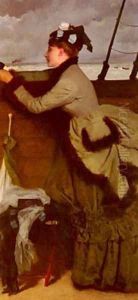Duez Ernest Ange Paintings
Ernest Ange Duez, born in 1843 in Saint-Denis, France, was an accomplished painter and illustrator whose work spanned from the late 19th century. Despite his relatively short life, as he passed away in 1896, Duez made significant contributions to the art world, capturing the essence of his era with a unique blend of realism and impressionism. His early life in the suburbs of Paris provided him with a rich cultural and artistic foundation, which was further enriched by his studies at the École des Beaux-Arts under the tutelage of Isidore Pils and Henri Lehmann. These formative years played a crucial role in shaping his artistic direction and aesthetic sensibilities.
Duez's career is marked by his versatility and mastery over various subjects, including landscapes, portraits, and genre scenes. His ability to imbue his works with a sense of immediacy and emotional depth resonated with both his contemporaries and critics. Duez's landscapes, often depicting the French countryside and seaside, are particularly noted for their vibrant light and atmospheric effects, reflecting the influence of the Impressionist movement, which was gaining prominence during his lifetime. However, he never fully embraced the Impressionist style, maintaining a commitment to the realism and detail that characterized his early works.
His participation in the Paris Salon, an annual art exhibition established by the French Academy of Fine Arts, was a significant aspect of his career. Duez garnered praise and accolades for his contributions, including a gold medal at the Exposition Universelle in 1889, a testament to his talent and the high regard in which he was held by his peers. His works were also exhibited internationally, further cementing his reputation as a significant figure in the art world of his time.
In addition to his painting, Duez was an accomplished illustrator, contributing to various publications of his day. This aspect of his work highlights his versatility and his keen eye for detail, as well as his ability to capture the essence of a moment or character.
Ernest Ange Duez's legacy is that of a painter who skillfully bridged the gap between the traditional and the modern, blending the detailed realism of his classical training with the lighter, more ephemeral qualities of Impressionism. His death in 1896 marked the loss of a highly regarded and influential artist whose works continue to inspire admiration for their beauty and technical proficiency.
